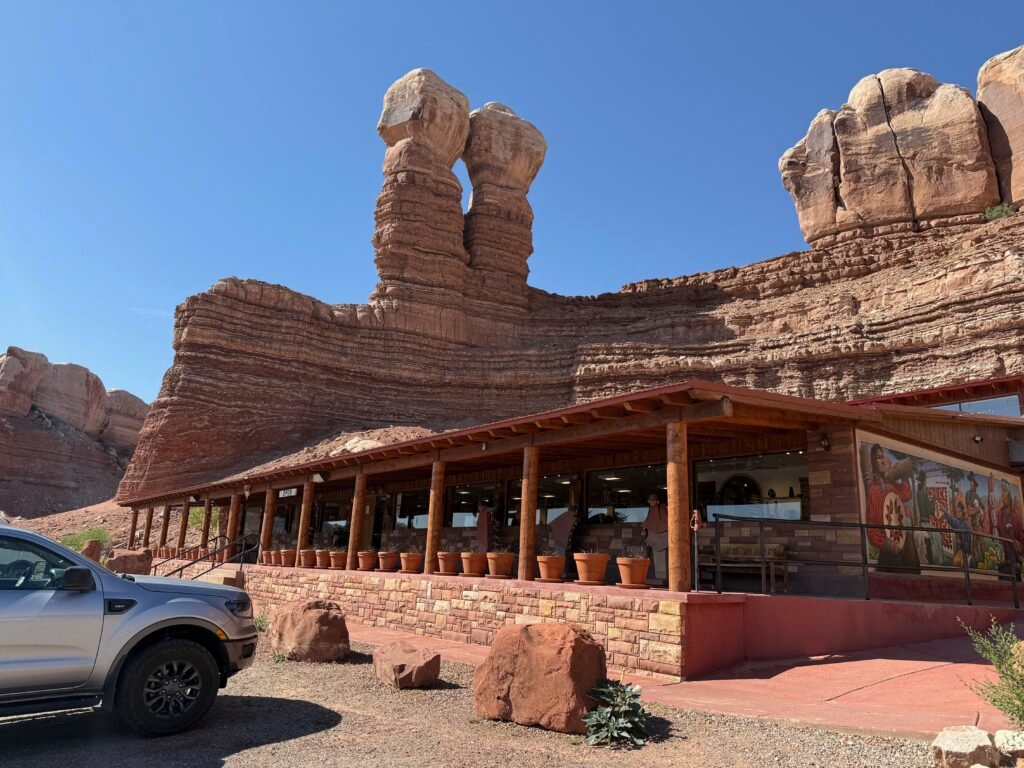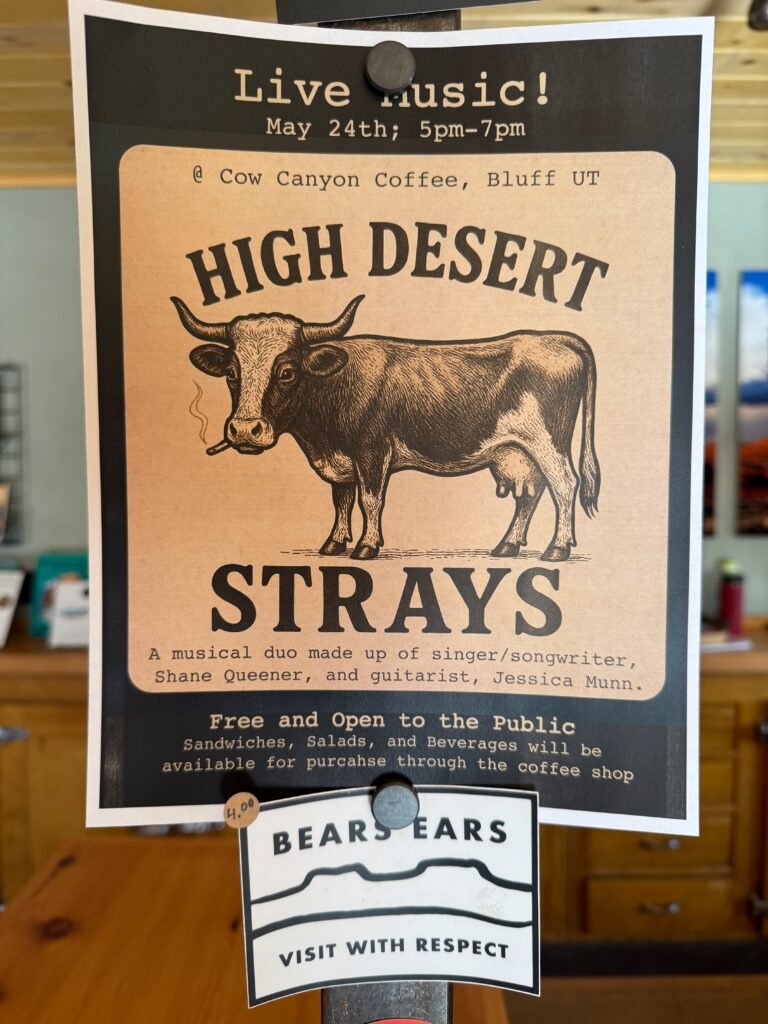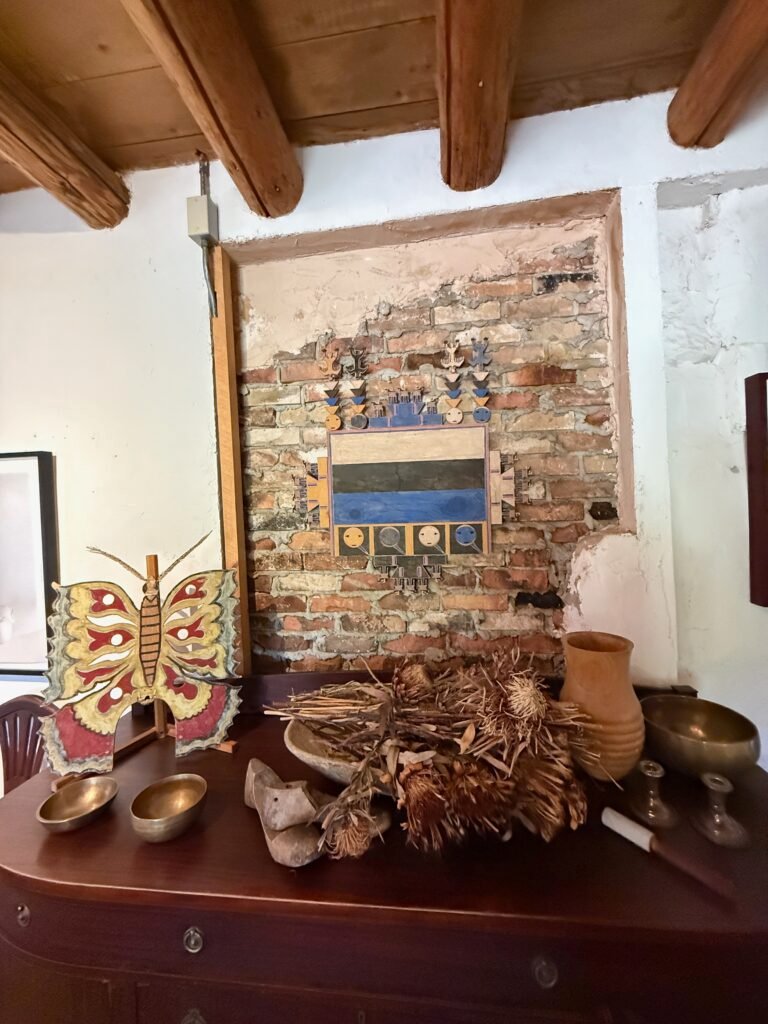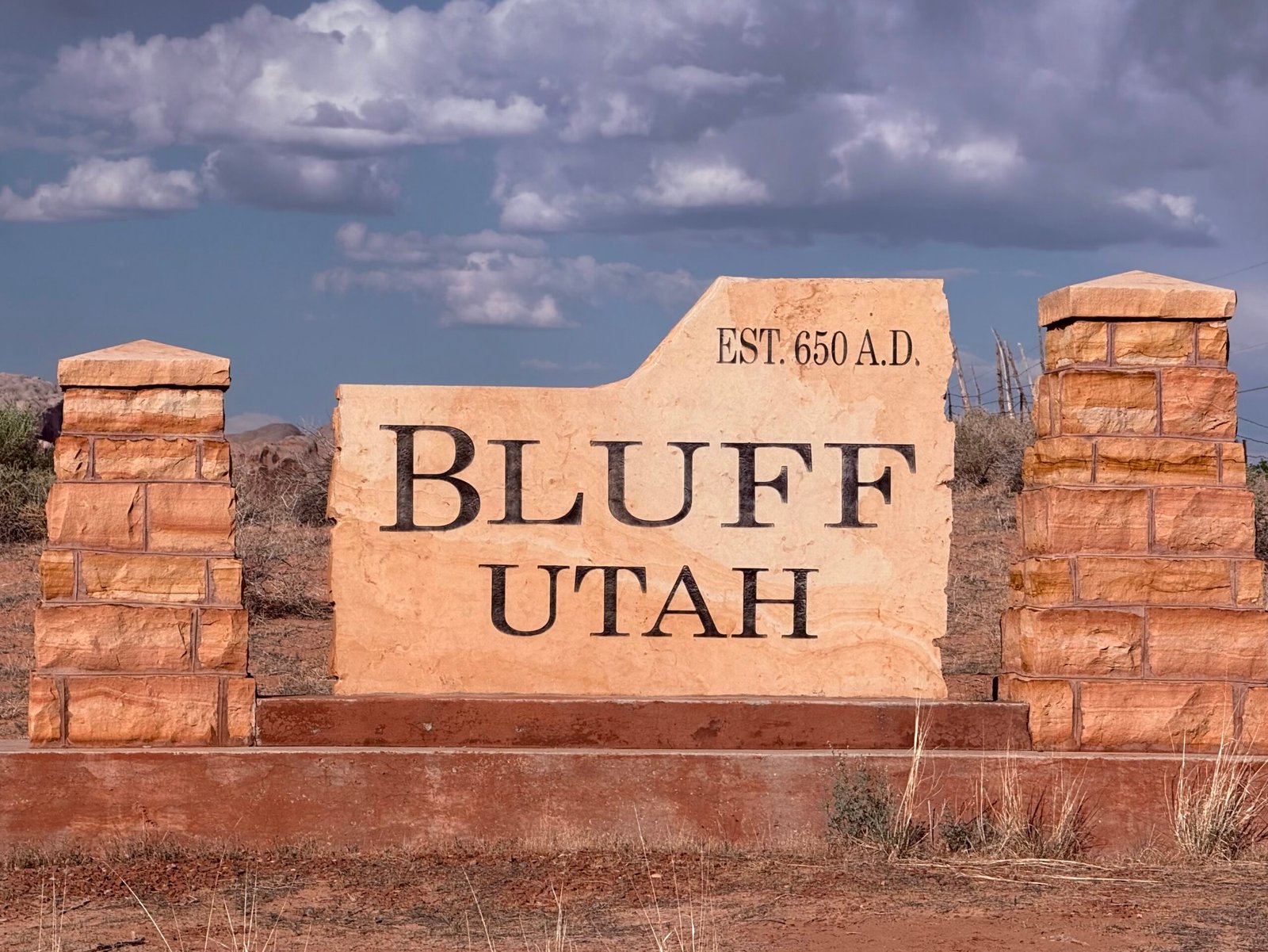#13 in the series.
This has been such an amazing experience. And a lot of it is due to the fact that we’ve been able to spend significant time here. But also, just about everyone we’ve met has been friendly and engaging.
“Are you a long hair?” Leo asked me matter-of-factly when he came through the door of the BEEC. Leo is quite an artist and he creates designs for the partnership.
“Well,” I said, “I do have a little Cherokee heritage.”
“How do you say ‘hello’ in your language? I’m Diné, We say ‘yá’át’ééh’.”
“I don’t have a clue,” I replied, a little embarrassed.
He sat down across from me at the low side counter and we had a nice chat.
This is interesting. I’ve kept a running list of how I’ve been “profiled” over the years and maybe the circle is now finally complete. Let me explain with a somewhat nonlinear story.
Not too long after 9/11, I attended a security conference at Fort Huachuca, near Sierra Vista. The base is very close to the Mexico border. The dinner and evening entertainment one night was at the Officers’ Club. Walking into the club I stopped by the restroom. In typical government style, there was a row of sinks along one wall. A man in a long black Duster had his toiletry/shaving kit out, and was apparently finishing up a shave. His hair was still wet from a rinse and he was completing the wash up by drying and twisting up his mustache.
I’m thinking, “Wow, how did this guy get in the Officers’ Club? How did he get on base?”
Lo and behold, he was a Cowboy Poet, part of a cadre of cowboys that included Baxter Black, the most famous. If you ever get a chance to read (or hear) Black’s “Range Fire,” give it a go, it’s quite captivating. But I digress…
This guy was the entertainment. And apparently he just rode in off the range? Fascinating. So after dinner he took the stage with a deep, booming voice and regaled us with cowboy poetry, steeped in wisdom and mystery. But let’s get back on track…
Driving back to Tucson from Fort Huachuca, I decided to take a more scenic route along state highways. As I topped a hill I saw a state trooper. Now, I wasn’t speeding. But I tan easily and it was summer and I had my shirt off with the windows down. Oh, and I had this massively bushy beard. As I expected, he pulled me over. Obviously an Arab terrorist sneaking across the border.
He asked for my license and looked me over. Then…he asked me my name. As the Appalachia rolled off of my tongue, he just handed me my license back. Yeah, no foreigner can fake an accent like that, you can go.
The second time it happened, I was with my family at Tybee Island. No beard this time. Joe and I were trying to get all the beach gear across the deep dry sand and had everything balanced on a wheeled cooler. The stack was high and unwieldy but we were almost over the rough part. A lady about 30 feet away shouted over to us, “If you put a strap across all of that it would stay together!” My son-in-law Joe and I were a bit dumbfounded that she felt the need to “help” us with our task and I had this quizzical look on my face. She asked, “¿No habla inglés?”
We both just fell out laughing. And we have laughed over it many times since.
So it became a thing for me over the years:
- A man with a clipboard approached me in front of a quick mart and asked me if I was the owner, thinking India.
- An office worker in Huntsville thought I was Sicilian.
- A veteran at a campground in PA, who was Brazilian, thought I was Columbian.
- In Belize, a local thought I owned the ice cream store up the street. Another, on hearing about my red meat allergy, just wanted to know, “How do you live here?!”
- In Peru, one of our drivers eyed me over and thought that maybe I was Bolivian.
Something is just not quite right about me. They can’t put their finger on it. Maybe it’s the green eyes.
So – and maybe sadly – my frame and skin tone have never been recognized as Native American, let alone Cherokee.
Do you remember Iron Eyes Cody? He was popular in some of the old westerns, but he became most famous as the “Crying Indian” for anti-litter campaigns in the 1970’s. He wasn’t Native American at all! He was in fact a Sicilian through and through, one Espera de Corti. Interestingly, he became a strong advocate of Native Americans, and near the end of his life actually believed he was Native American. Truth is stranger than fiction.
Anyway, I think Leo brought it on home. He came in a couple of days later and I was ready. He announced, “Yá’át’ééh!” I replied in Cherokee, “O si yo!”
Ya know, I’m kinda glad to get that off my chest. I’ve always wondered if my ancestry would ever be recognized. It seems that Native Americans are just an afterthought these days. You don’t hear much about them, other than some “pain” they want to cause. And back east it’s only street and place names that seem to carry their legacy. Just like our beautiful springs, the reason most towns got their start. But that’s another discussion.
We’ve gotten comfortable here in Bluff. And there’s so much more to explore. But it feels like it’s time to head back home.
I briefly met another Joe, this one being a local artist. A fascinating man whom I learned not only discovered the mammoth petroglyph at Sand Island but also the oldest named dinosaur species in all of Utah. He walks to the beat of his own drum, you can feel it and see it in his demeanor. As we talked, he asked why we were here. I mentioned that we were volunteering for a month and that we like to spend time in a place in order to get a feel for it.
He said, “We call that eddying out.”
That hit me like a bolt of lightning. I’ve spent a lifetime of “swimming upstream.” Sometimes because I’ve had to, sometimes because I like questioning things to sift out their true meaning, sometimes, because I just enjoy it. It can be hard, and every once in a while I just give up and float aimlessly back down the river like an electro-shocked fish until I snap out of it. I have learned that taking the stream head-on in the channel will tire me quickly. Steadily working upstream along the streambanks is a better way to go.
But this idea of drifting along downstream while looking for the calm eddies is something I will have to consider. Or maybe it is something I’ve been doing all along.
The comment reminded me of late last summer when Patricia and I were floating the 16-mile remnant of Glen Canyon to Lee’s Ferry from the dam. The Colorado twists and turns and there are huge, deep pools just before the riffles where the river narrows and the flow regains speed. Patricia and I had been gently pulled into an eddy that split from the riffle and literally carried us several hundred feet back upstream along the inside of the bend along the magnificent bluff wall. It took minutes to circle around…and we just let the eddy circle us around a second time.
And then with a single paddle stroke at the appropriate time, we slipped out of the eddy to move on downstream. Delicious.
So yeah, eddying out. Some circle a while, some never leave. I love the chill.
It’s a unique place. Steve at Twin Rocks Trading Post is first class, as is his beautiful store. His “watch dogs” are not to be confused with “guard dogs” and have their own special purpose, tripping up any ne’er-do-well attempting to flee the front door.

I guess those rocks have been there a long time, but man they are huge.
Across the street, Cow Canyon Trading Post has its own vibe. Liza has a beautiful space with a little music from time to time.



And there are even crazier rocks down the road. Mexican Hat gets its name because it looks like an upside down sombrero.
It kinda defies belief. Especially when you think about how long it has balanced there.

But I love the city limit signs in Bluff. Stating that it was “established” in 650AD, it acknowledges that cultures come and go. Centuries and centuries of indigenous tribes, and more recently the Mormons made a go of it before mostly moving on to Blanding and Monticello.
Maybe that’s the story of the Colorado Plateau and its people. A dynamic landscape and a living history. Maybe that’s the way life is supposed to be lived. Settle where you might, move when you need, return if you can.
The buttes at Bears Ears were recognized by five different and distinct tribes as “Bears Ears.” A centerpoint of ancestral lands. The Bears Ears Partnership, in kind, is at the center of a cultural renaissance. One where we begin to more fully understand the history of our great nation and earnestly begin to teach it to our children. Our country has a history and culture like no other, it seems we should awaken to it and respect it in a manner it deserves.


Leave a Reply